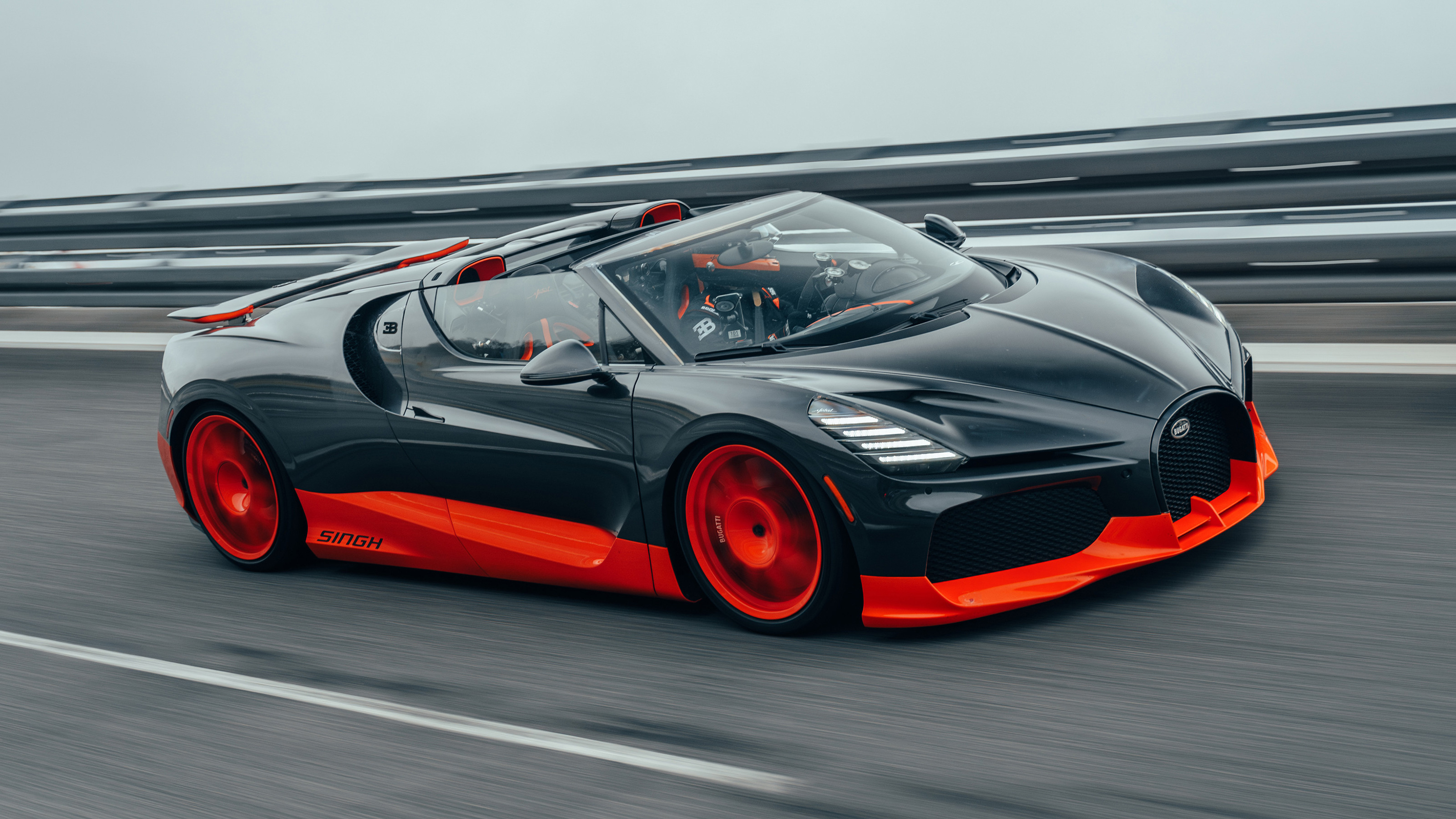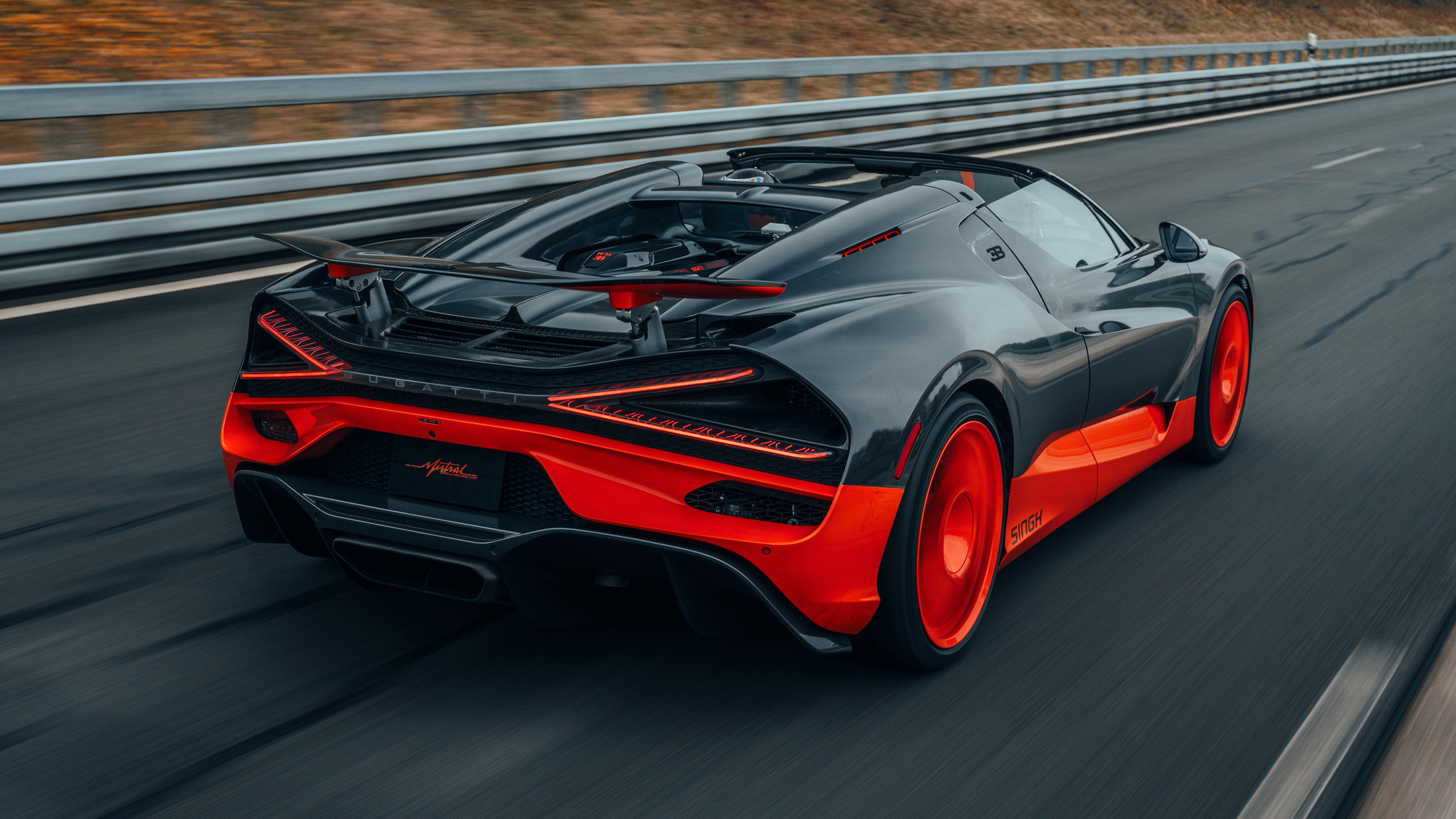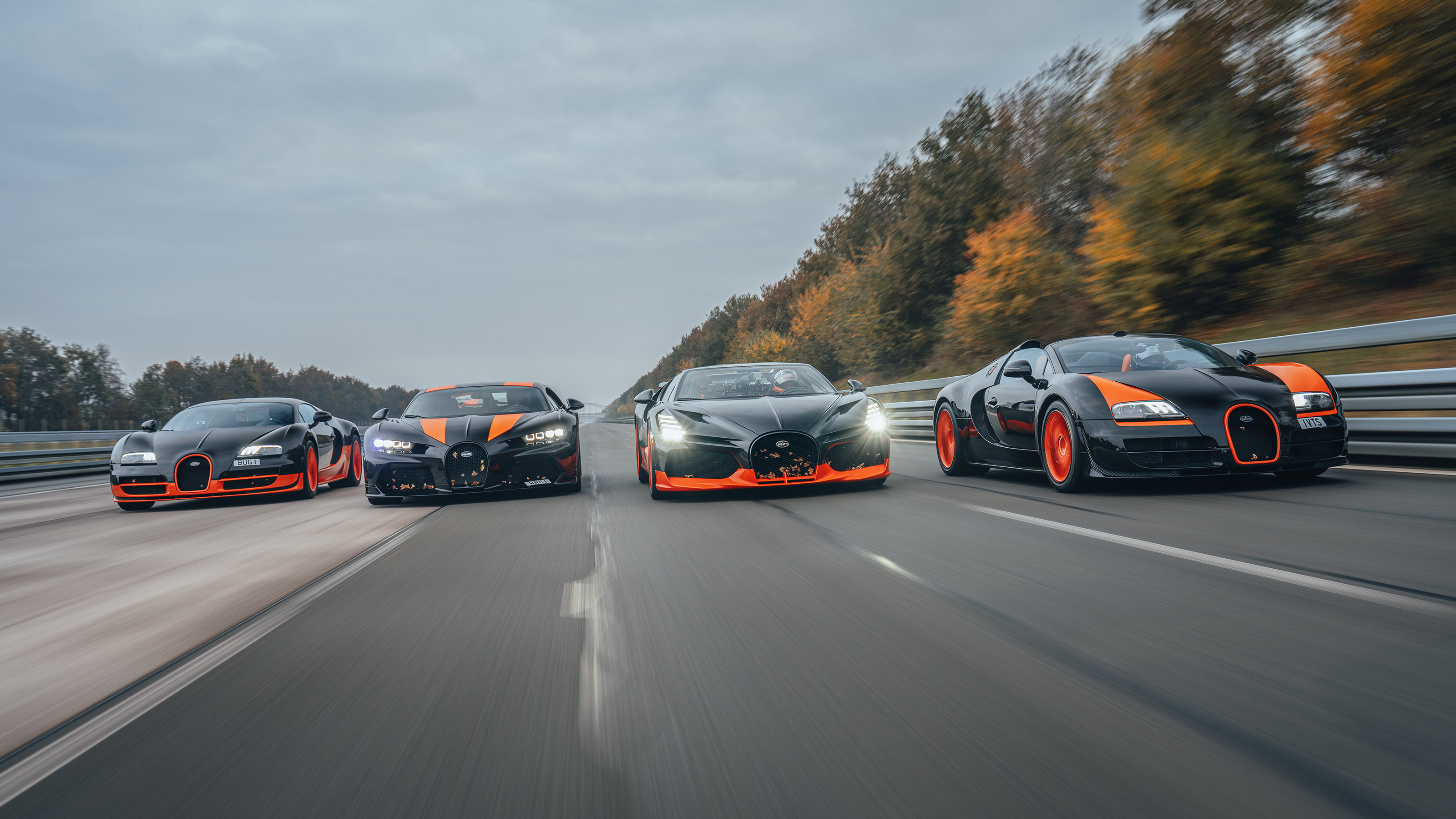
Bugatti Mistral review
Good stuff
Weird and wonderful soundtrack, immense power, sense of quality and integrity. And freakishly not-draughty
Bad stuff
Quite pricey. And rare
Overview
What is it?
The Bugatti Mistral is the fastest roofless road car ever made, having clocked an independently verified maximum of 282.04mph (453.9kph) at the Papenberg test track, northern Germany in November 2024.
Another record-breaking Bugatti. But it’s also more bespoke than Bugatti’s previous convertible – the Veyron Grand Sport Vitesse – and a fitting final flourish from the 8.0-litre quad-turbo W16 engine that began its life in the original Veyron over 20 years ago.
Is this basically a Chiron Convertible?
Underneath, yes: the Mistral (named after a southerly French wind rather than a Le Mans-winning racing driver) uses the same carbon tub as the Chiron, the same suspension, gearbox, brakes and 1,578bhp tune of engine from the Super Sport version. It also keeps the Chiron’s quite exquisite interior.
But it doesn’t share a single carbon fibre body panel with the Chiron. Even the head- and tail-lights are bespoke. And the wheels. So Bugatti can reasonably claim to have kept its promise that it would ‘never build an open-top Chiron’. It’s cunningly coachbuilt a new car around the same foundations, and you’d imagine that most of the 99 being built will go to garages that already contain a Chiron or two.
Only 99? I guess I’m too late.
Afraid so. All have long since been sold despite a price of around $5m, or £4.2 million before tax or personalisation. The one-off World Record Car seen in these pictures which we’ve test-driven cost its owner a staggering €14 million (£11.6 million) – but it’s also the only Mistral that will ever run faster than its 261mph limiter will allow. Apparently around half of the Mistral production run is headed to the USA. Just what you need in a Minnesota winter. At least it’s got four-wheel drive.
Does it actually have a roof?
From how chopped the visor-like screen looks (and the lack of visible clasps) you’d imagine this is less weatherproof than the northern British railway station, but Bugatti design director Frank Heyl confirmed to TopGear.com that customers will indeed be supplied with a folding fabric roof which can be stowed in the small boot under the bonnet.
It’s secured onto the central spar between the twin ram air intakes, which also acts as an air-smoothing wing at speed. Elegantly done. No word on how fast you can go with the roof in place, but ironically enough the day the Mistral went 282mph is possibly the only time one of these will ever come face-to-face with drizzle.
What's the verdict?
Bugatti has had plenty of chances to send the W16 engine out on a high before now: it could’ve called time after the 304mph exploits of the Chiron Super Sport, said a crazy one-off like La Voiture Noire was the ideal curtain call, or argued the extreme track-only Bolide was the perfect final flourish. But we’re very glad indeed it kept building W16s long enough for this 1,578bhp ‘Super Sport’ version to end up in a roadster.
While the W16 Bugattis have always commanded respect for their prodigious numbers and sledgehammer top trumps, the quad-turbo 16-cyl engine has never been as evocative a powerplant as a Ferrari or Lamborghini V12.
It will never rev or sing like those iconic engines, but to anyone who besmirches it for lacking character, the Mistral buries that argument forever. Finally given an amplified voice, this engine’s last action in this world is to unveil an addictive sense of humour and stacks of personality.
The Mistral could’ve been a run-out model afterthought, but that’s now how Bugatti does engineering. It’s a fitting ending to the Piech era of Bugatti, a deeply well-engineered instrument that combines massive power with effortless performance, stunning quality and humbling ease of use. Merci and auf wiedersehen, W16. What an era it’s been.
Featured

Trending this week
- Car Review
BMW 1 Series






